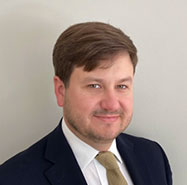 SappCHARLOTTE — Faced with tremendous growth and the increasing complexity of construction projects, the Diocese of Charlotte has created a new construction management process to enhance collaboration and strategic investment in capital projects across the diocese.
SappCHARLOTTE — Faced with tremendous growth and the increasing complexity of construction projects, the Diocese of Charlotte has created a new construction management process to enhance collaboration and strategic investment in capital projects across the diocese.
The process brings together all stakeholders from parishes, schools and the diocese who are involved in construction projects costing $1 million or more to hone plans early in the process, so that everyone is working toward a common vision.
“We’ve seen so much growth in our diocese that it’s critical for us to ensure our building program will efficiently and effectively accommodate our needs for new schools, churches and other projects,” said Monsignor Patrick Winslow, vicar general and chancellor of the diocese, and the architect of the new approach. “A key element is for parishes, schools and the diocese to get aligned early and check-in often so we can produce the best possible result and make the best use of the Church’s resources.”
The new process promotes the engagement of stakeholders and requires teamwork from the initial project concept through completion of construction and dedication of a space. The diocese and the parish or school involved form a single team to execute plans established during a strategic planning process.
As part of the new approach, the diocese restructured and divided the growing responsibilities of its properties staff to create two departments:
> The Office of Construction will oversee major building projects and offer project management services at the diocese’s 92 parishes and missions, 20 schools, and diocesan facilities.
> The Office of Properties will handle real estate acquisition and disposition, small to mid-size renovations and construction, and maintenance and preservation of an array of schools and other diocesan properties.
Emmett Sapp, who served as construction manager for the Properties Office for more than four years, will lead the new Construction Office. He will oversee two project managers as his team assists pastors, Catholic schools administrators, and capital project stakeholders through the streamlined process to plan and execute large capital projects.
Most recently, Sapp and his team oversaw the completion of the $6.4 million Fulford Athletic & Activity Center at Christ the King High School in Huntersville.
Sapp is excited about his new role and the promise of the diocese’s new approach. “We work to establish a common vision from the beginning, before we start spending a lot of time, effort and financial resources on a project,” he said.
The diocese began dissecting and rebuilding the process nearly two years ago, with input from stakeholders across the diocese.
“With the committed leadership and personal attention of Monsignor Winslow, the team dedicated significant time and attention toward improving project outcomes and experiences by developing a process that is very structured and clear – so parishes and schools will know, at any time, where their projects stand and what next steps are,” Sapp said.
Monsignor Winslow likens the process to “a directory at a mall. I want to be able to look at the map and say, ‘I am here,’ at any given moment in the process.”
Sapp is part of the team that developed a new Capital Construction Team handbook for use by parishes currently considering capital projects. St. Joseph Parish in Asheboro, Holy Spirit Parish in Denver and Our Lady of the Mountains Mission in Highlands are all using the handbook to guide their ongoing capital projects.
The team will finalize the handbook this summer after receiving feedback from those pilot parishes.
Over the past four and a half years, the diocese has assisted in executing 28 major capital projects totaling around $76 million. Ten projects with a combined cost of $22 million are expected to be completed in 2023. Sapp is also tracking 33 projects with an expected cost of $161 million with completion dates beyond 2023.
“Our goal in the Construction Office,” Sapp said, “is to use our professional expertise to serve the needs of our growing Catholic community in alignment with the bishop’s vision and local pastoral leadership.”
— SueAnn Howell

